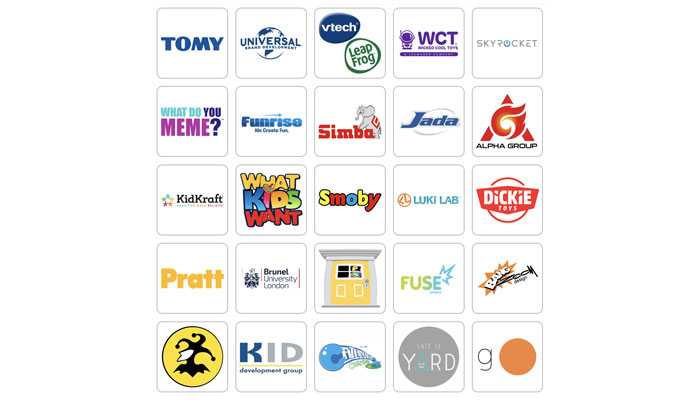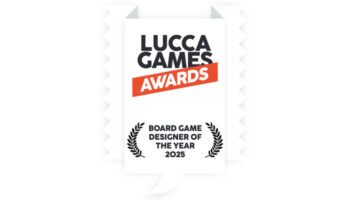Beyond the Pitch: Trina McFarland reveals her thoughts on the importance of Inventor Relations

Trina, thanks for joining us. Like me, I understand you’re interested in discussing inventor relations beyond the pitch… What kind of things do you think are under-discussed?
Ah, the pitch! It’s like an exciting first date, right? It’s the part that everyone talks about, focuses on, and offers the most resources and guidance for… In my humble opinion, though, it’s the part that has the least to do with becoming a successful inventor, or a company with a great reputation and priority within the inventing community.
That’s quite a bold statement!
It’s unorthodox, I know! But I really want folks to hear that… The pitch is not that important. For inventors, the essential ingredients for success come together before the pitch. For manufacturers and licensors, the most crucial aspects of having a successful inventor outreach – and reputation – come after the pitch.
So let’s just clarify… I think a lot of focus falls on the pitch because that’s what terrifies people! Public speaking is the world’s number one fear, and pitching an idea is arguably worse. But you’re saying – in terms of an ongoing process – the pitch is a very small, and relatively unimportant part of the process?
Yes. And none of this is to say that the pitch doesn’t matter because it does. But I want inventors to remember that, when they pitch, they’re not just pitching the concept… They’re also pitching how they think and how they solve problems. They’re pitching their capabilities and they need to prepare with that in mind. I’ve heard many times – from various industry leaders on the company and inventing side – that, “great concepts will sell themselves.”

Implying that inventors don’t really need to ‘sell’ to those leaders?
Right. Granted, the concept is usually in the right sizzle format with some type of proof of concept… The great thing about a sizzle is that you can edit and perfect it, until you’re comfortable – and then lead with it. You can be there to answer questions and hear feedback, but sizzles can help take the pressure off. We should recognise that not all inventors are great salespeople, and it’s important to focus on the merits of ideas without the distraction of the pitch and person selling it if we’re to embrace “concept inclusivity.”
Right.
Meanwhile, companies need to see a pitch as an opportunity to show an inventor how they intend to continue the dialogue, which leads to the next concept, and the next, and the next after that. Hit items, new brands and shared successes are born from the hard work of building relationships with inventors AFTER the pitch. So the relationship after the pitch is where a company can shine, or slink off into the shadows.
Out of interest, then, why do you think so little gets written about feedback and follow up?
Because, as Inventor Relations, we don’t like to focus on ourselves and our responsibilities on the company side. To be clear, feedback and follow-up is the company’s responsibility and that’s supposed to be managed by Inventor Relations. An inventor shouldn’t have to chase a company for an update on a concept they’ve shared that’s actively under evaluation. It’s our job to put systems, process, workflows, and tools in place to proactively manage this and keep inventors current. That’s how we build relationships, priority, and establish trust with inventors.

That being the case, why do you think things sometimes fall down on the company side?
There are four primary reasons, I think. First, the people charged with managing inventors for many companies don’t have the right tools. That means they become easily overwhelmed, and can’t do their jobs well. That’s especially true with large influxes of incoming concepts after pitch events. Managing up to the pitch is about all they can handle. How can anyone be expected to manage hundreds of inventors, and thousands of concept submissions a year, using only email and an Excel or Google spreadsheet? It’s just not possible to do a comprehensive or great job with those tools.
So they may not have the right tools to handle the volume of work. What else?
Second, commitment and culture…Inventor Relations is really about supporting final-decision makers. Unfortunately, those final decision makers often can’t – or in some cases won’t – commit the time or resources to look at inventor concepts, much less follow up on them… And Inventor Relations is only as good as the teams and leaders they support, and consensus they can drive. It takes a team commitment and support from leadership to drive for results together. The goal is always to place our bets on the best concept, regardless of where they come from – internally or externally – and then go for it. That’s a healthy, inventor-friendly culture. And culture starts at the top.
Third?
Third: trust. The relationships and trust between internal design teams, final-decision makers and their Inventor Relations aren’t strong, or they don’t have the right workflows in place to work as a unified front. You can tell when IR is lockstep with decision makers and the needs they’re supporting. Inventor Relations builds relationships and trust with both internal decision makers AND inventors if they’re to be successful.

And finally?
Priority! Sometimes a company has a designated contact point for inventors, often called Inventor Relations, but they wear another hat in the business. Inventors are often an afterthought to their core responsibilities. I think the title of inventor relations belongs to folk that are solely focused on managing inventors, the concepts and innovation programs.
That raises an interesting question. Is a product developer – left to give inventors an update, say – not actually in Inventor Relations?
Right. Inventors, please try to understand there’s a range of “Inventor Relations” and what that actually means in the industry. Some are better equipped to follow up, give feedback and manage the practical working gears of an outreach. People are usually doing the best they can with the experience and tools available to them – and demands placed on them. It never hurts to ask someone what their role is within a company so you can better understand – and, in some cases manage your expectations about – the level of support they can provide.
Let’s take a look at feedback… Do you have a particular format, or set of criteria, that you think is ideal for sharing inventor feedback? If so, what is it?
Based on my experience in many companies over many years, this is what I know… Thoughtful feedback typically can’t come in the actual pitch session. We can have a quick exchange about initial reactions, and whether or not something is an immediate fit, or worth more dialogue. But most people need time to sit and digest a concept before they can say anything meaningful or helpful.
Because there’s not enough time and space to consider and drill into ideas?
Exactly. And not because of a lack, or how anyone manages an event, but the nature of in-person pitches always feels a bit rushed and chaotic. So it’s challenging to give constructive feedback on the spot… At TinkerTini, our workflow is very intentional, and based on experience with how to get the best out of design and leadership teams on their time, with diplomacy and efficiency that ultimately best serves the inventor. And again this happens – yup, you guessed it – after the pitch!

There is that moment, though, isn’t there, immediately after an inventor pitches something where feedback has to happen… All the more so, perhaps, if it wasn’t a great pitch!
Yes, of course. Very often, it’s a pass because it’s not a fit for the company they’re pitching to, and their current needs – which the inventor didn’t bother to research ahead of time. Or they come with a sell sheet and that’s not a professional format to be pitching. Or we can pass for costing, safety or sometimes just because it’s not that fun, exciting or novel. Most of the time, I ask for more time to think about concepts after the fact.
Here’s something I don’t think I’ve heard discussed: to what degree should this be a two-way street? How helpful would it be, do you think, for Inventor Relations people to get feedback from inventors on how they felt the pitch went?!
I’m glad you asked that! CRITICAL! I’ve always made it a priority to invite and make it safe for inventors to give us honest feedback about everything we do at TinkerTini. It still shocks me how often companies fail to invite safe, candid, and anonymous feedback from inventors. Inventor Relations should be accountable. Without honest assessments from the community we’re tasked to engage, support and manage, how can we improve?
So it’s something you encourage at TinkerTini?
Absolutely. We’ve made many changes to our Tinkerly platform and workflows that were 100% driven by inventor feedback and requests. That dialogue will always continue for us and, as a result, we’ll continue to get better together. That’s how relationships work. So yes, I’m a big fan of two-way streets!
Great answer. Now, I think it goes without saying that inventors should show grace under fire with difficult feedback… On those occasions when it’s worth pushing back, though, what’s a sensible way to do it?
I recommend a perspective shift here: There’s no such thing as difficult feedback. Feedback is always valuable, whether positive or negative – even none can be telling. For us, quick passes without lengthy comments means that the concept is off-target and off-strategy, or it didn’t excite the team. If you get a quick pass, I suggest revisiting that company’s website and published wishlist…

To what end?
To ask yourself critical questions: Was your concept on target? And does it make sense for that company? Was your sizzle concise and exciting? Then look at products in the marketplace and compare them to your concepts… Is your concept compelling? Does it stand out? Most of the time, inventors can answer their own questions if they stop and look at their concepts objectively. If I were an inventor and I truly believed my concept made sense for a particular company after a pass, I’d ask Inventor Relations to share their opinion on what, if anything, I could do to strengthen the concept and take it from there, knowing opinions in the toy business are subjective. One company’s pass is another’s next hit product. All depends on their capabilities, brands, licenses, strategy, even the relationships with particular buyers, expertise and leverage in certain categories, even an executive’s personal interest areas… It gets granular and complicated in ways I’m still wrapping my head around.
We touched on this a little already, but I’m curious… If we asked 100 inventor-relations people how they’d like inventors to follow them up, we’d get 100 different answers! Broadly speaking, though, what are the do’s and don’ts of inventor follow-up?
First and foremost, I think you’d be hard-pressed to find 100 Inventor Relations people! The title “Inventor Relations” is a bit fluid and confusing these days, but in my humble opinion, there are currently only a handful of individuals in the industry that have the unique skillsets, historical knowledge, relationships, and experience required to create, manage, and scale a well-rounded responsible global inventor outreach.
Well, I take your point since this might be a case of semantics… What I mean to suggest, though, is that there are hundreds of people having to manage relationships with inventors, and I think they’d each occasionally get a nudge from inventors…
Well, I stress this because Inventor Relations comes with heavy and real responsibilities that can have long-term implications for companies and the inventing community. Which brings me back to the point: inventors shouldn’t have to follow up and chase us down that often… It’s OUR job to establish the workflows, to proactively manage inventors and their in-house concepts. If anything, very often WE do the chasing and reminding inventors of next steps. If you must follow up as an inventor, though, the right approach is always “What can I do to help or support you with the review and final decision on my concept?”
And how soon is too soon to start following up? What can inventors and IR folk do to make this a smoother process?
Experience, resources, tools, process, and workflows are essential to keep the gears moving. To proactively manage an inventor outreach, IR is ideally spending one hour a week with key decision makers to review new submissions and touch base on concepts under evaluation.

An hour a week, did you say?
Right. That’s typically the right frequency and cadence to keep things moving seamlessly for all. At TinkerTini, we’re responding within 24 hours of a submission, one to two weeks for preliminary feedback from clients, a month or two for more formal evaluation with costing. Granted, there are delays now and then given the world’s ever-changing pandemic circumstances! Concepts in the contract phase can get hung up pending legal teams, but on average we wrap those up within 30 days, sometimes as quickly as 24 hours.
Oh, wow. That’s impressive! So now… You’ve made clear that this isn’t how you operate, and it’s not how you’d like others to operate… But it seems to me that inventors get caught between a rock and a hard place. If they take the initiative and follow up too often, it’s incredibly irritating! But then again… The squeaky wheel gets the grease, surely? What’s the solution there, do you think?
Inconsistent or no communication is a red flag for any inventor, but it’s not just about the feedback… It’s also about where their concept pitch materials are housed, who can access them and for how long, and so on. Poor follow-up typically indicates poor process, and that carries much bigger problems than the irritation of not hearing back. Companies with the best intentions in the world may show up for the pitch, and happily take in your concept without any real process, protocols, experience or infrastructure in place to ensure inventors are treated appropriately after the fact…
That’s an unnerving thought…
You likely don’t want to share your concepts with a company you have to chase down after your first date. Better to take your ideas elsewhere to companies that are committed to treating you as a priority and with professional respect. If anyone ever asks you, be candid: “I never heard from you, it’s hard to get feedback, I don’t know what’s happening, you’re hard to work with, you showed my concept to a buyer without a license in place or my permission, and so on.”
Some people are going to wince at that level of candour!
One unique aspect of being TinkerTini is that we’re in the circle of influence with our clients, but we’re not employees of any one company. So we’re a safe place to hear the general woes of inventors… And we hear a lot! But I’m here for it, and really value the candid input. I always want to understand an inventor’s experience in the industry as a whole so we can use it to improve and refine how we approach our own role and value systems supporting our clients.

Let me ask you this: when an inventor fears they’re being ghosted by a toy company, what are the real signs? I mean… How might one know the difference between a slow company and a total fob off?
I think if you don’t hear back from a company within 30 days of your submission, you’ve been ghosted. I’ve often heard of high-level executives going from red hot to ice cold and then silent within days… They don’t even show the courtesy of providing the reasoning for their change of heart.
No, there can be a fascinating lack of communication accompanying that drop in temperature!
Fortunately, as part of the checks and balances of the ecosystem, inventors do talk to each other. Reputations become well known, and ultimately ghosting will impact what a company sees from the community moving forward. My view is that, whoever you are, regardless of title, you should treat inventors with the courtesy and respect they deserve… If you aren’t prepared to manage the follow-through and follow-up, don’t personally engage inventors at all.
You clearly feel quite strongly about this…
Sorry if it seems heavy handed, but the reality is that engaging half-heartedly can damage a company’s reputation for years to come. It’s not easy to repair a relationship with a community, and it takes years to overcome a bad reputation. If you’re going to engage with inventors, do it right and help yourself for the long haul. Build and protect those relationships.
And from the other side of the fence, what can the community do about the ghosters?
Like my Nana said, “Speak with your wallet.” Or in this case, “Your concepts”. Take them to companies that have invested in the right resources and talent to ensure fair treatment of inventors. As a collective, inventors have more power than they think. Speak openly and honestly about your experiences. Hold us accountable on the company side; help us help you in practical ways. What do you care about? What would make your inventor life easier? It’s our job to listen and find solutions for you so you can focus on INVENTING. We all win when inventors are focused on inventing.

What are your thoughts about managing in-house concepts?
You mean how we manage inventor concepts that are active and “in-house” with clients?
I do!
Then I have so many thoughts! First, the management and communication around active concepts on our client dashboards is the bulk of our daily focus and priority as a team. We keep these dashboards full and focused to ever- changing needs all the time. Second, I think about the infrastructure, the processes and tools to facilitate managing concepts. Our Tinkerly platform is testament to this, and an evolving labor of love.
Third, I consider the psychology behind decision making and gaining consensus, building teams, and perfecting working relationships with our clients to respond to what they ask us for and help them discover what they didn’t know they needed. Finally, I ponder how to proactively manage next steps for our clients, ensure that milestones are met and advance the concept forward to success, or as I morbidly say, “It dies a good death”, meaning we did everything we could to give it the best chance possible, and the pass was legitimate and grounded in reasoning we all understand.

The last time we spoke, you expressed an important sentiment in a concise way… You said something to the effect, “You never need a contract until you need a contract.” What did you mean by that?
In our corner of the industry, contracts exist to manage expectations and clearly define the roles and responsibilities around how inventor concepts are treated. The absence of some type of inventor agreement in place prior to pitching demonstrates a lack of understanding around the obligations a company assumes when they’re evaluating concepts. If there’s no agreement geared toward inventors, there likely isn’t any experienced guidance overseeing the outreach who has considered both company and inventor perspectives.
In other words…
It’s all fun and games until it’s not! Then claims can escalate if they’re not managed quickly and with experience. I’ve been fortunate to not have anything escalate beyond myself in my entire career. That’s not due to luck, but rather experience, and doing my part to prevent misunderstandings by being transparent and upfront with balanced contracts. The last thing I want is for a misunderstanding to be THE misunderstanding that escalates to the point of shutting a company’s door to inventors.
Instead of my actions being dictated by the possibility of facing a devastating incident, I prefer to create a comprehensive outreach for the community where proactive responsibility is a core tenet. I much prefer to build and hold doors open, not shut them.
Great answer. And appreciating that there may be some transatlantic differences to consider, what would you say counts as a red flag in a contract?
For inventor submissions, the absence of a contract is a red flag. A generic NDA is also a red flag. Both indicate the company hasn’t thought inventor engagement through, and they don’t know what they’re doing.

Presuming there might be a limit to their budget, where can inventors get help to see if a contract is fair or not?
Networking with other inventors and comparing notes is always the most affordable way to gut check an agreement. Make friends! Find your inventor tribe and play fair; help each other.
What other advice can you give people that might help prevent claims?
Any company engaging inventors must have best practices in place with how they document and record their own internal IP. There should be a clear firewall between any designer or employee that may be influenced or inspired by an inventor concept in submission archives and records.
So that there’s some limit of who can see those ideas?
Exactly. Concepts shouldn’t be accessible by just anyone in the company at any ol’ time! Exposure points should be heavily controlled, with records kept of who saw what and when. Having strict documentation procedures in place sets the appropriate tone: these concepts don’t belong to us, and they’re to be treated with the respect and discipline they deserve.
Trina, thanks for making time to share your thoughts on this area… It can be a complicated and divisive one and your insights are fantastically interesting.
–
To stay in the loop with the latest news, interviews and features from the world of toy and game design, sign up to our weekly newsletter here





















